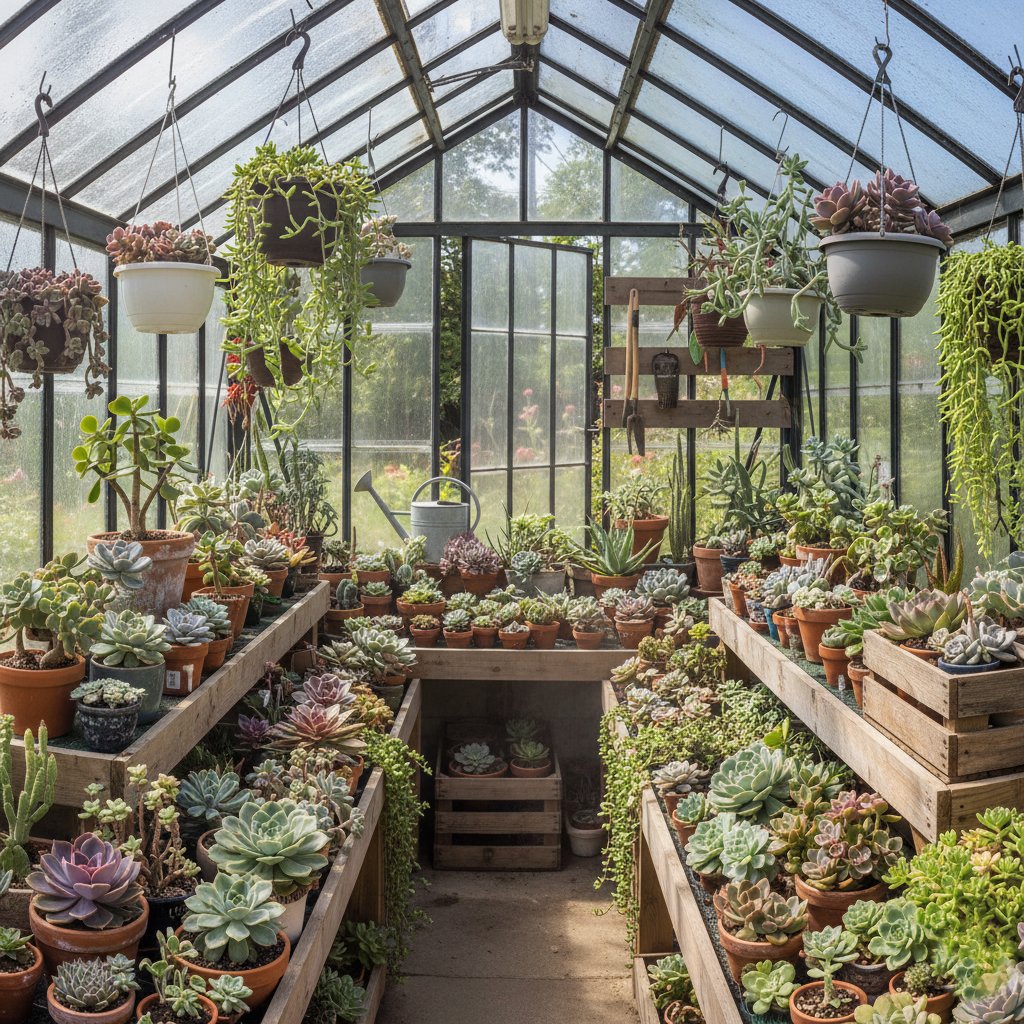Succulents For Greenhouses
Growing succulents in a greenhouse lets you control light, temperature, and moisture so your plants stay healthy year-round. You can grow more varieties and achieve steady growth even when outdoor conditions aren’t ideal. With the right setup, your greenhouse becomes a stable environment where succulents thrive instead of struggle.
You’ll learn which types of succulents adapt best to greenhouse life and how to create the right balance of sunlight, airflow, and humidity. Simple adjustments to your setup can prevent common issues like rot or sunburn.
A well-maintained greenhouse not only keeps your succulents healthy but also makes care easier and more consistent. Once you understand the basics of structure, maintenance, and seasonal care, you’ll see how rewarding greenhouse growing can be.
Best Succulents for Greenhouses
You can grow many types of succulents in a greenhouse, from easy-to-care-for varieties to rare species that need precise conditions. Choosing the right plants helps you manage light, temperature, and humidity while keeping your collection healthy and attractive.
Popular Succulent Varieties
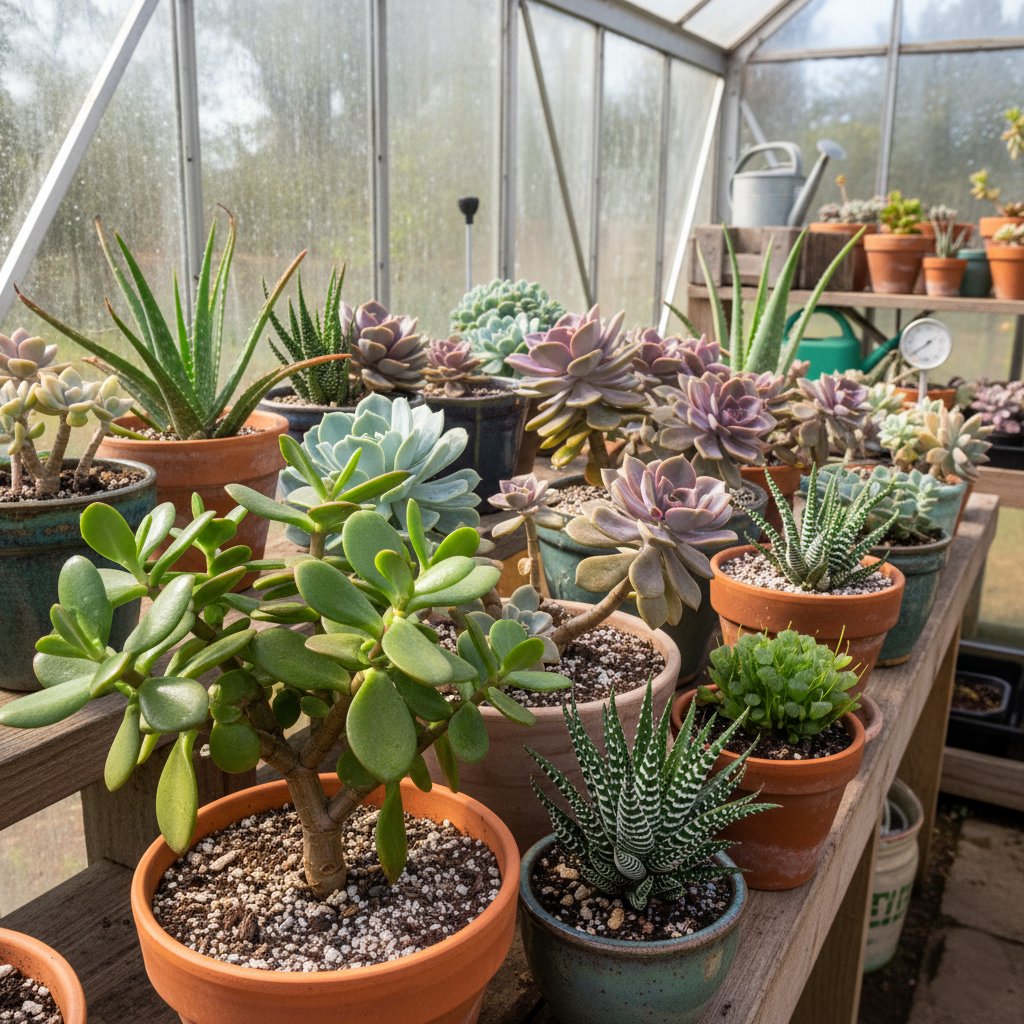
Common greenhouse succulents thrive in stable, bright environments. Echeveria, Aloe, and Haworthia are dependable choices that adjust well to controlled light and moderate watering. These plants prefer well-draining soil and temperatures between 60–80°F (15–27°C).
Jade plants (Crassula ovata) and Zebra plants (Haworthiopsis fasciata) grow well on greenhouse when given their specific light needs. They tolerate brief dry periods and need only occasional watering once the soil dries completely.
| Variety | Light Needs | Watering | Notes |
|---|---|---|---|
| Echeveria | Bright, indirect | Every 1-2 weeks | Compact rosettes, many colors |
| Aloe vera | Bright, filtered | Every 1-2 weeks | Medicinal uses |
| Crassula ovata | Full sun | Every 2-3 weeks | Thick stems, easy to prune |
Rare and Exotic Succulents
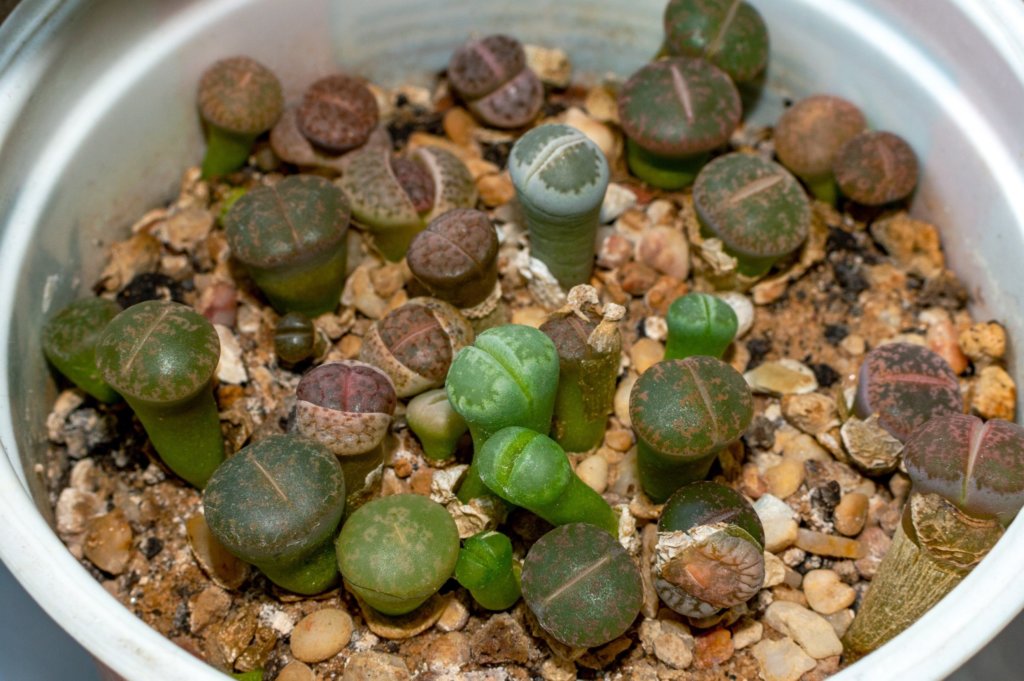
Some greenhouse owners enjoy cultivating less common species that demand more precise care. Lithops (living stones) need strong light and minimal water to prevent rot. These plants mimic stones in their native habitats, making them ideal for collectors seeking variety.
Rare succulents often grow slowly, so patience and careful monitoring are key. A greenhouse helps you maintain consistent conditions that outdoor environments may not provide year-round.
Seasonal Succulent Choices
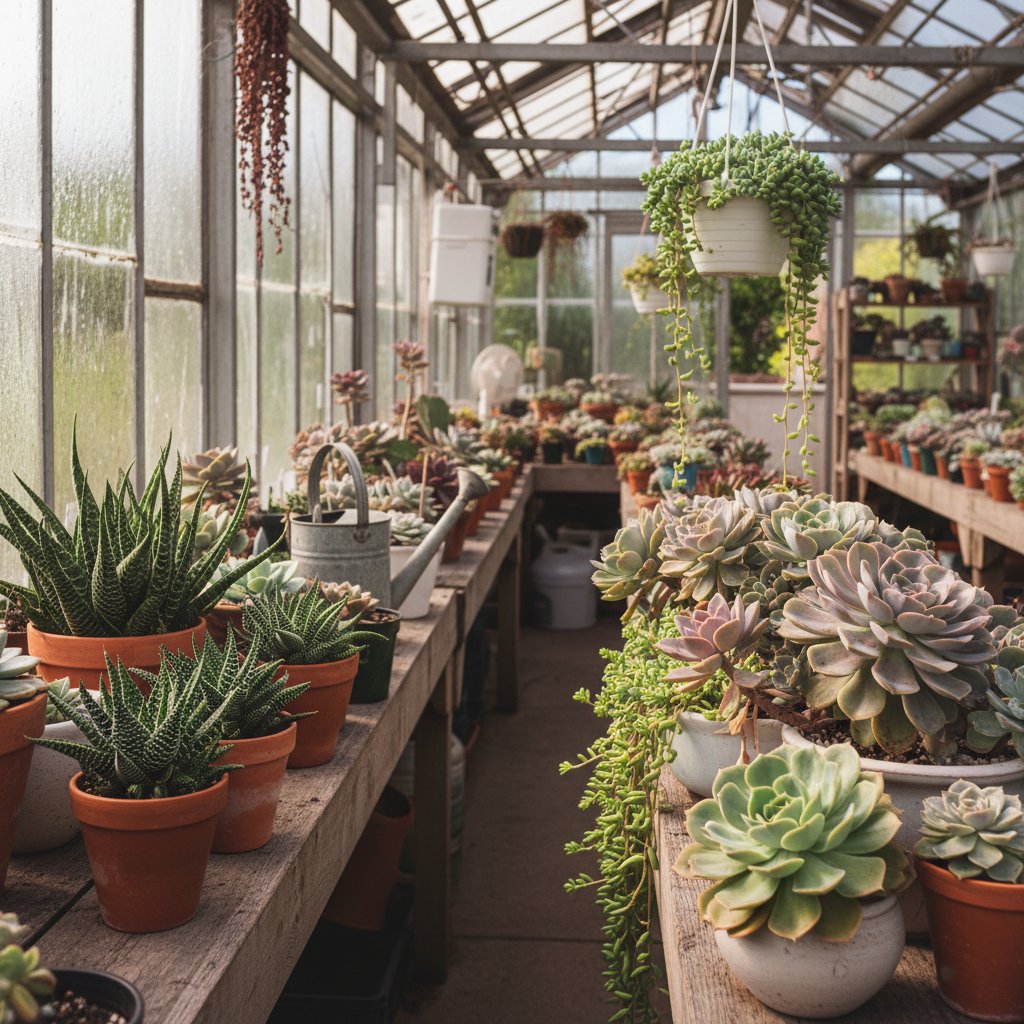
Seasonal changes affect how succulents grow and rest. In cooler months, Gasteria, and Haworthia tolerate lower light and cooler nights. During warmer months, sun-loving types like Sedum, Graptopetalum, and Echeveria perform better with extra airflow and filtered sunlight.
You can rotate plants based on their active growing seasons. For example, winter growers like Haworthia benefit from mild temperatures, while summer growers such as Echeveria thrive in brighter light.
Adjust watering schedules with the seasons, less in winter and more during active growth, to keep your greenhouse succulents balanced and healthy.
Essential Greenhouse Conditions for Growing Succulents
To grow succulents successfully in a greenhouse, you need to manage temperature, light, airflow, humidity, and soil drainage carefully. Each factor affects how well your plants store water, resist disease, and maintain healthy growth.
Optimal Temperature and Light
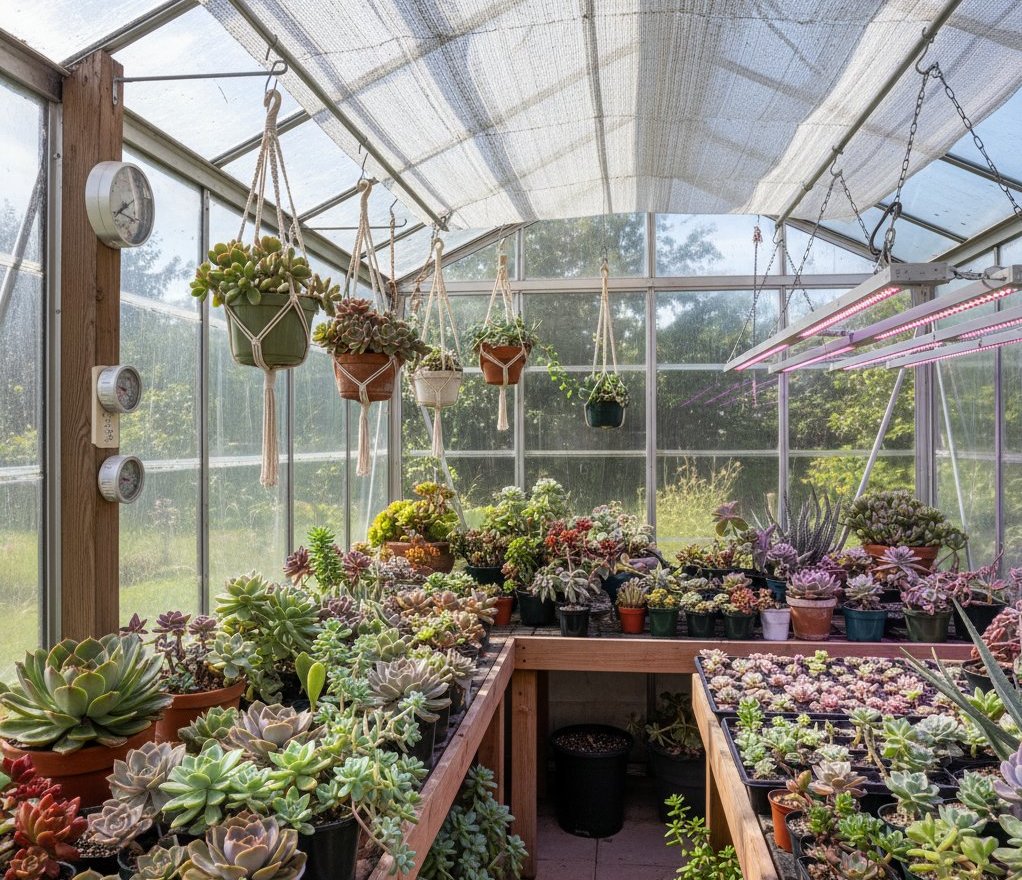
Succulents prefer daytime temperatures between 70–85°F (21–29°C) and nighttime temperatures around 50–60°F (10–16°C). These ranges help prevent stress and encourage steady growth. Use a thermometer to monitor conditions and adjust heating or cooling systems as needed.
Provide bright, indirect sunlight for at least 6 hours each day. A greenhouse with a transparent roof or large windows allows enough natural light. In winter or cloudy climates, use grow lights that mimic full-spectrum sunlight.
Avoid placing succulents too close to glass panes, where intense sunlight can scorch leaves. If your greenhouse gets too hot, install shade cloths or adjustable panels. These help filter light and prevent overheating during summer months.
Ventilation and Humidity Control
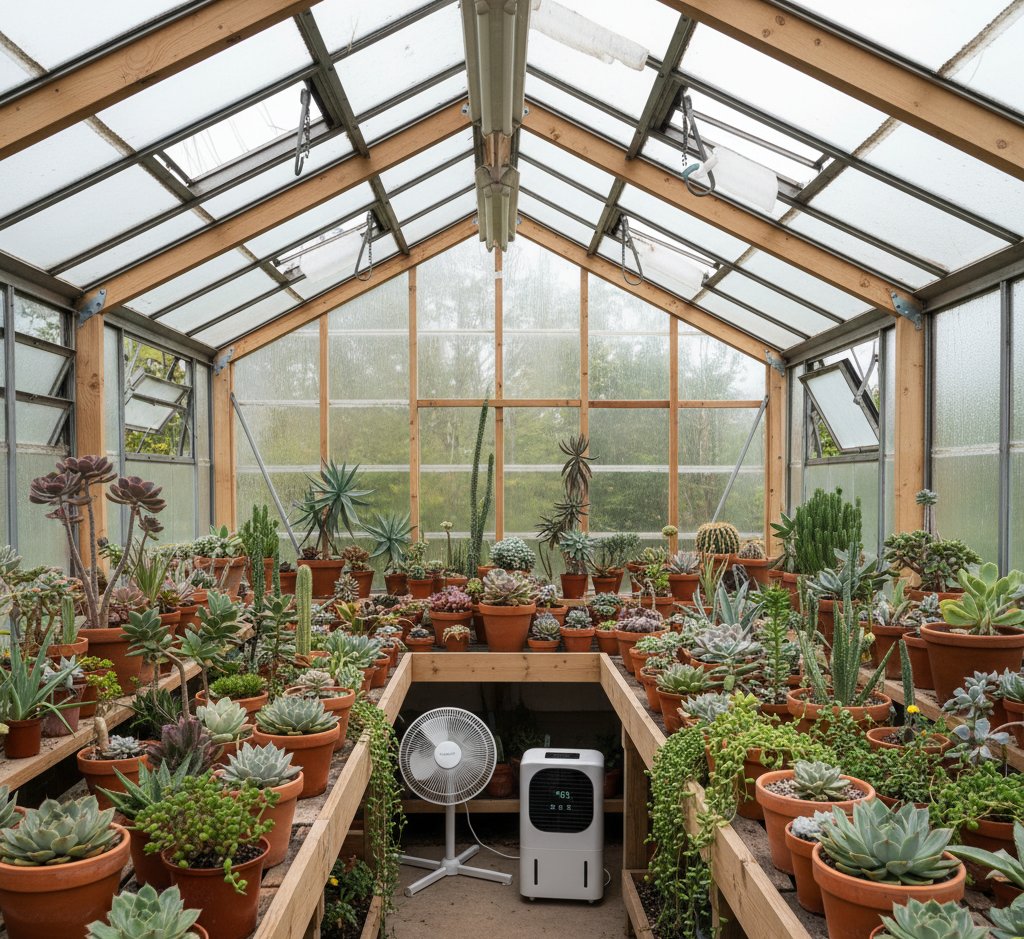
Proper ventilation keeps air moving and reduces excess moisture that can lead to rot. Use roof vents, side vents, or small fans to create gentle airflow throughout your greenhouse. This helps maintain even temperature and prevents fungal growth on leaves and soil.
Succulents grow best in low to moderate humidity, ideally between 30–50%. In humid regions, open vents or run a dehumidifier to remove moisture from the air.
Avoid crowding plants. Leave space between pots so air can circulate freely. This spacing also reduces the risk of pests such as mealybugs and aphids, which thrive in still, damp air.
Greenhouse Setup and Maintenance Tips
A well-designed greenhouse helps you control temperature, humidity, and light for healthy succulents. Careful selection of structure type, interior layout, and watering systems ensures efficient growth and reduces plant stress.
Selecting the Right Greenhouse Type
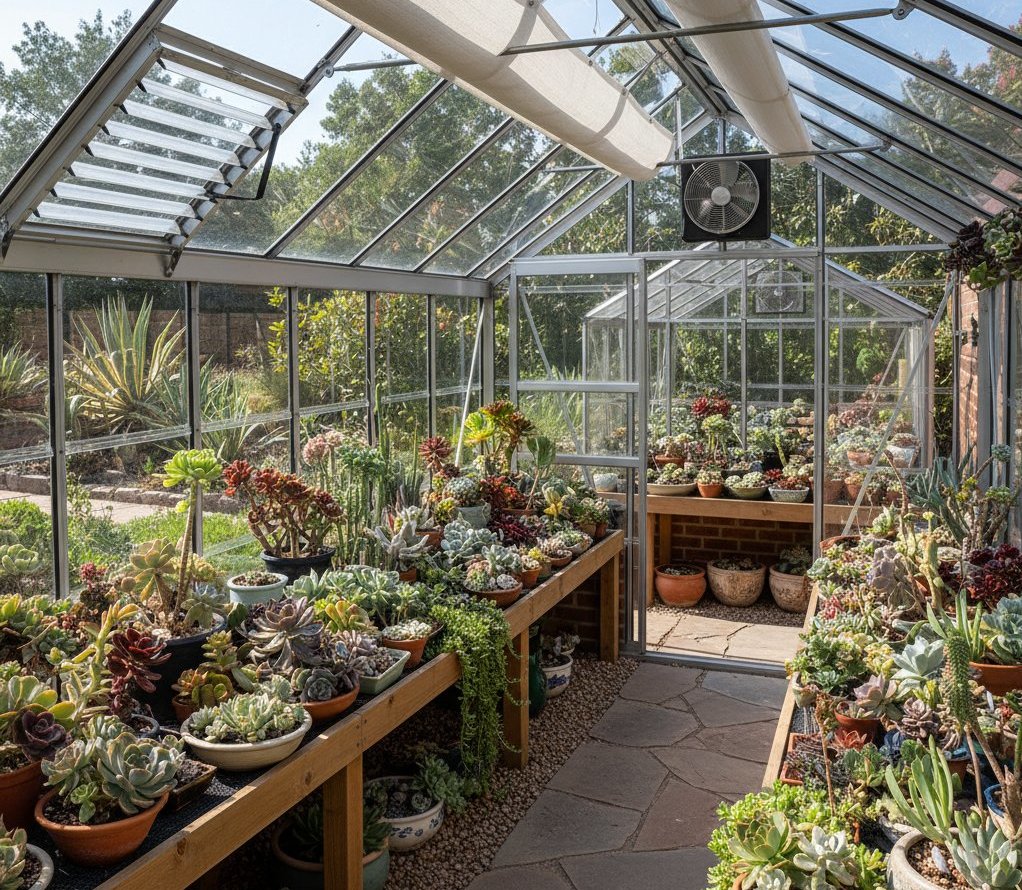
Choose a greenhouse that provides strong light, steady airflow, and protection from extreme weather. Succulents prefer bright, indirect sunlight, so a structure with clear polycarbonate panels or tempered glass works well.
If you live in a hot climate, use shade cloths or vented panels to prevent overheating. In cooler regions, select a model that supports insulation and temperature control, such as a double-walled frame.
For small collections, a mini or lean-to greenhouse offers enough space and is easy to manage. Larger setups benefit from freestanding greenhouses that allow separate zones for different succulent species.
| Greenhouse Type | Best For | Key Benefit |
|---|---|---|
| Mini / Lean-to | Small spaces | Easy temperature control |
| Freestanding | Large collections | Customizable layout |
| Polycarbonate | All climates | Durable and light-efficient |
Keep vents or fans running to maintain air movement. Proper ventilation prevents rot and fungal issues common in humid environments.
Shelving and Layout Strategies
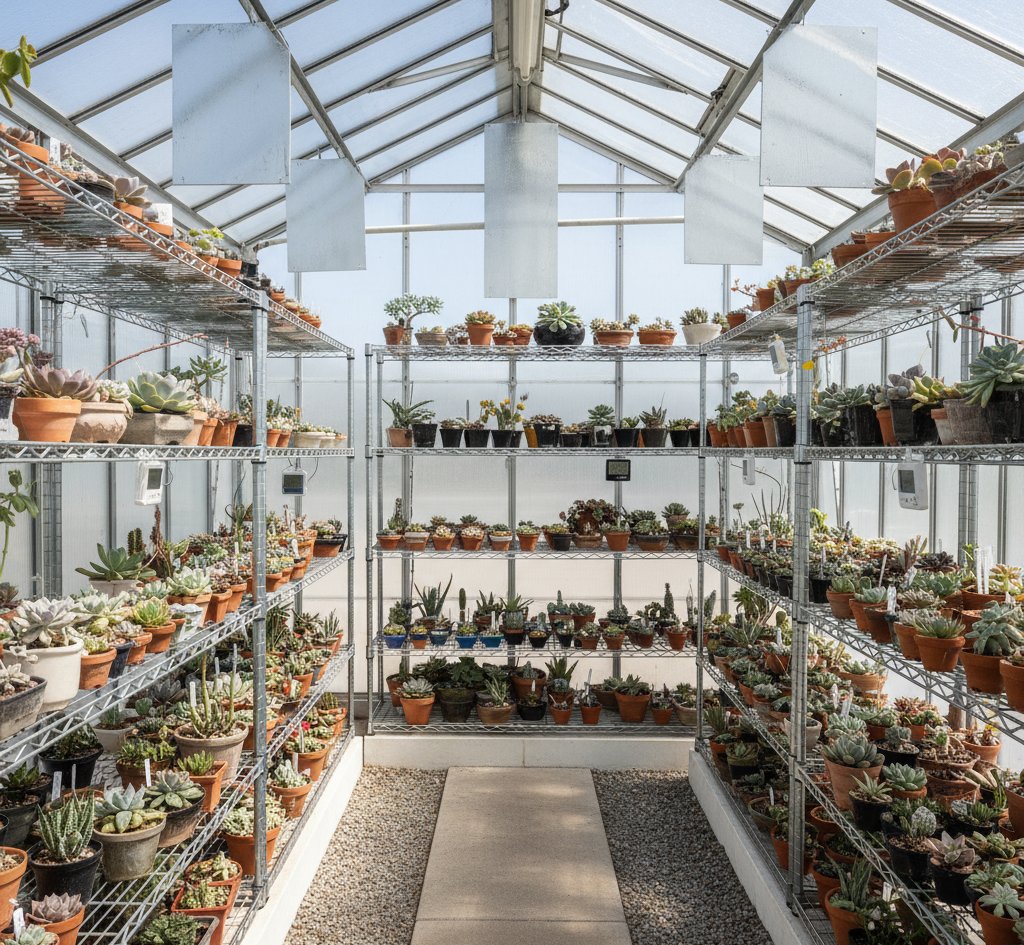
Arrange plants so each succulent receives adequate light and airflow. Use tiered metal or wire shelving to maximize vertical space and prevent water buildup under pots.
Group plants by light and water needs. For example, place Echeveria and Sedum near brighter areas, while Haworthia and Gasteria do better in filtered, bright light.
Keep aisles wide enough for easy access and cleaning. Place thermometers and hygrometers at different levels to monitor microclimates.
Add reflective surfaces or white walls to distribute light evenly. Avoid crowding, as poor spacing limits air circulation and encourages pests.
Frequently Asked Questions
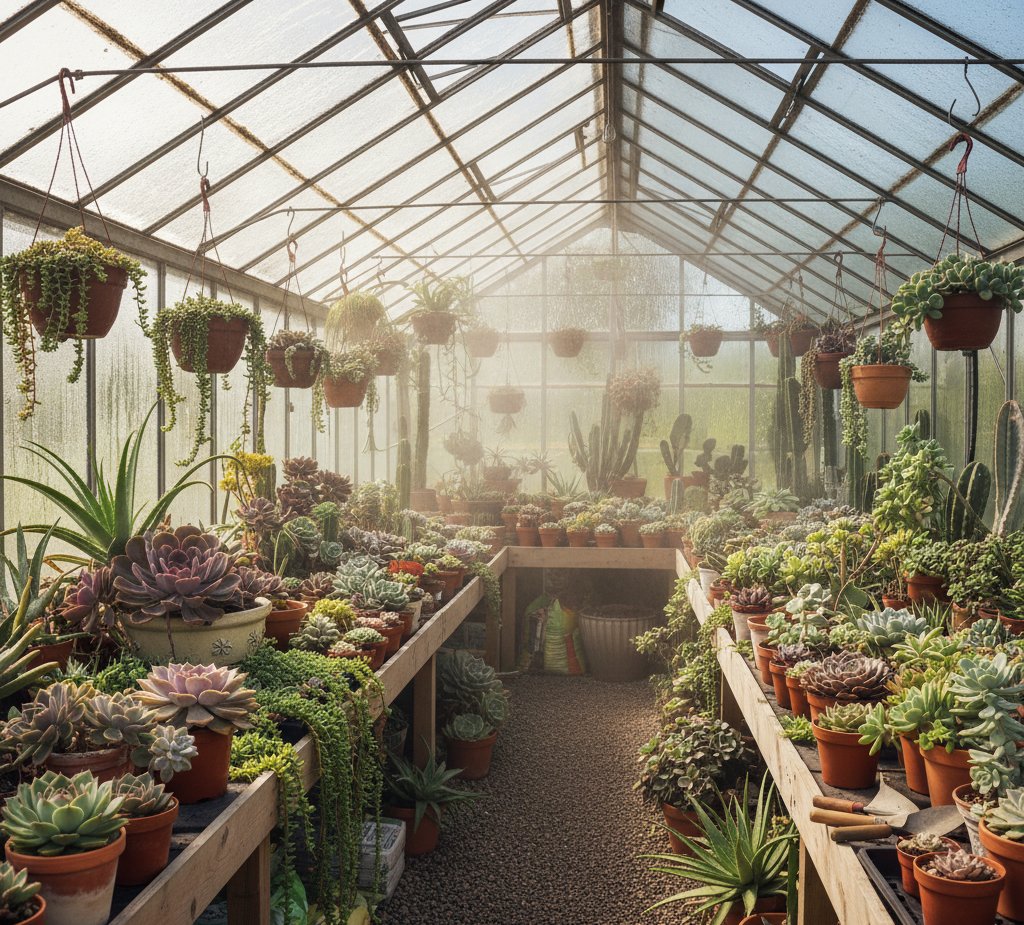
You can grow many types of succulents in a greenhouse if you manage light, temperature, and humidity carefully. Proper watering, ventilation, and structure design help maintain healthy growth in both full-size and mini greenhouse setups.
What are the best types of succulents to grow in a greenhouse?
Choose hardy varieties that adapt well to controlled environments. Echeveria, Aloe, Haworthia, Sedum, and Graptopetalum do well under greenhouse conditions. These plants tolerate moderate temperature shifts and respond well to filtered sunlight.
How do you maintain proper humidity levels for succulents in a greenhouse?
Keep humidity between 30% and 50% to prevent rot and fungal growth. Open vents or use small fans to increase air circulation. Avoid misting the plants directly, as excess moisture can damage leaves and roots.
What is the ideal temperature range for cultivating succulents in a greenhouse?
Maintain daytime temperatures between 70°F and 85°F (21°C–29°C) and nighttime temperatures around 50°F to 60°F (10°C–16°C). Use heaters in winter and shade cloths in summer to prevent temperature stress.
How can I create a mini greenhouse environment suitable for succulents?
Use a clear plastic or glass container with ventilation holes to allow airflow. Place it in a bright area with indirect sunlight. Add a shallow layer of well-draining soil and avoid sealing the container completely to prevent moisture buildup.
What are the watering requirements for greenhouse-grown succulents?
Water only when the soil is completely dry. In most cases, this means every 7–14 days, depending on temperature and humidity. Always use pots with drainage holes to prevent standing water around the roots.
Can succulents thrive in an indoor greenhouse, and if so, what are the specific care considerations?
Yes, succulents can thrive indoors if they receive enough light and airflow. Place your indoor greenhouse near a south-facing window or use grow lights. Monitor temperature and humidity closely, and avoid overwatering since indoor air often holds more moisture.

